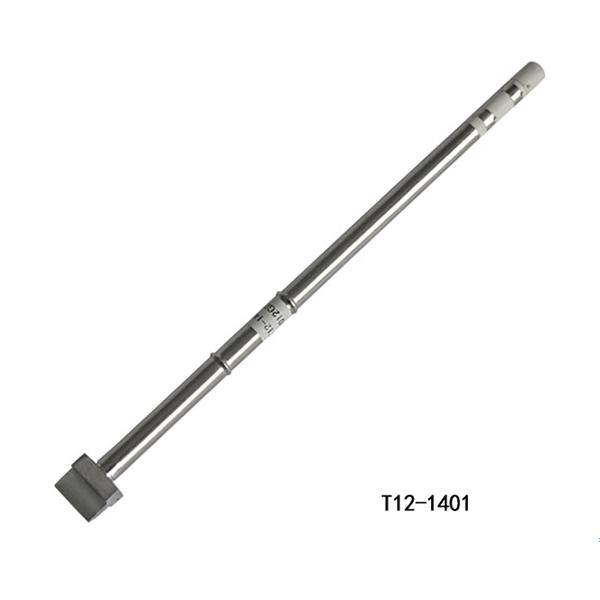تُحسّن الصيانة المناسبة بشكل كبير من موثوقية وعمر أدوات اللحام، مثل مكواة اللحام، مما يقلل من الحاجة إلى استبدالها بشكل متكرر. يساعد الاهتمام المستمر في الحفاظ على وظائف هذه الأدوات، وهو أمر حيوي لتحقيق نتائج عالية الجودة أثناء مهام اللحام. من خلال استثمار الوقت في الصيانة الدورية، يمكن للمرء ضمان أداء هذه الأدوات بشكل مثالي طوال فترة خدمتها المتوقعة. بالإضافة إلى ذلك، تسهم الأدوات المحفوظة جيدًا في السلامة. الأدوات التي تعمل بشكل صحيح أقل عرضة للتلف، مما يقلل من مخاطر الحوادث أو وجود روابط لحام معيبة. في النهاية، تعتبر صيانة أدوات اللحام جزءًا أساسيًا من ضمان عمليات لحام آمنة وفعالة.
الحفاظ على نظافة مكواة اللحام الخاصة بك أمر ضروري لضمان الأداء الأمثل وتمديد عمرها الافتراضي. دليل خطوة بخطوة لتنظيف طرف مكواة اللحام يتضمن استخدام إسفنج رطب وصوف سلك النحاس. ابدأ بتسخين مكواة اللحام، حيث يكون التنظيف أكثر فعالية عندما يكون الطرف ساخناً. امسح الطرف بلطف باستخدام إسفنج رطب لإزالة أي باقي من اللحام.对于更顽固的沉积物,使用黄铜钢丝绒擦洗尖端,保持 سطح التلامس الخاص به لنقل الحرارة بكفاءة أثناء الاستخدام.
استخدام أدوات التنظيف المناسبة أمر حاسم لصيانة أدوات اللحام. تلعب المنظفات المتخصصة، مثل منظفات الأطراف الكيميائية لإزالة الفلاكس، دورًا مهمًا في الحفاظ على أداء الأدوات. تعمل منظفات الأطراف، التي غالبًا ما تُصنع من النحاس أو البرونز، على إزالةOLDER sin WITHOUT تلف الطرف. تذيب مزيلات الفلاكس الكيميائية الرواسب العنيدة التي تكون صعبة التنظيف بطريقة أخرى. إدراج هذه الأدوات المتخصصة للتنظيف في روتينك يمكن أن يعزز بشكل كبير كفاءة وموثوقية مكواة اللحام الخاصة بك.
فهم أسباب التأكسد على رؤوس اللحام أمر حيوي للحفاظ على أداء اللحام المثالي. يتكون التأكسد عندما يتفاعل المعدن المكشوف لرأس مكواة اللحام مع الأكسجين في الهواء، خاصةً عند درجات الحرارة المرتفعة. يمكن أن يؤدي هذا التفاعل إلى تكوين طبقة من أكسيد الحديد، والتي تعمل كحاجز وتقيّد نقل الحرارة بكفاءة وتدفق اللحام السلس، مما يؤدي إلى نتائج غير جيدة في عملية اللحام.
لمكافحة التأكسد، يمكن تنفيذ عدة تقنيات فعالة. يعتبر تغطية رأس مكواة اللحام باللحام بشكل منتظم إجراء وقائي أساسي. يتضمن هذا العملية تغليف الرأس بطبقة رقيقة من اللحام، مما يخلق حاجزًا وقائيًا ضد الأكسجين. بالإضافة إلى ذلك، تعد ظروف التخزين المناسبة أمرًا مهمًا لتقليل التعرض للرطوبة، التي يمكن أن تزيد من التأكسد. من خلال تبني هذه الاستراتيجيات الوقائية، يمكنك زيادة عمر أدوات اللحام الخاصة بك وضمان نتائج عالية الجودة باستمرار.
تعد إدارة درجة الحرارة بشكل صحيح أمرًا حاسمًا لتحسين أداء وأعمار أدوات اللحام، خاصة عند العمل مع مواد لحام مختلفة. قد يتطلب كل مهمة لحام إعداد درجة حرارة محددة بناءً على نوع اللحام المستخدم. على سبيل المثال، عادة ما يتطلب اللحام الخالي من الرصاص درجة حرارة أعلى مقارنة باللحام الذي يحتوي على الرصاص. استخدام إعدادات درجات حرارة غير صحيحة يمكن أن يؤدي إلى مشاكل مختلفة مثل تلف طرف اللحام وجودة رديئة في نقاط اللحام. من الضروري استشارة إرشادات صانع اللحام وضبط إعدادات درجة الحرارة وفقًا لذلك.
تعتمد فعالية أدوات اللحام بشكل كبير على التحكم المستمر في درجة الحرارة، والتي يمكن أن تؤثر بشكل ملحوظ على أداء الأداة وعمرها الافتراضي. الحفاظ على بيئة تسخين مثلى يضمن أن المكواة اللحام تنقل الحرارة بكفاءة إلى القطعة المراد العمل عليها، مما يؤدي إلى روابط لحام دقيقة وقوية. من ناحية أخرى، فإن التغيرات أو الحرارة الزائدة لا تساهم فقط في نتائج لحام غير جيدة، ولكنها يمكن أن تسريع تآكل مكونات مكواة اللحام، مما يؤدي إلى فشل الأداة قبل أوانها. من خلال الاستثمار في نظام تحكم دقيق في درجة الحرارة، يمكن للمهندسين ضمان الاستخدام المطول لأدوات اللحام الخاصة بهم، مما يوفر في النهاية التكاليف المتعلقة بالاستبدال المتكرر.
استخدام اللحام عالي الجودة والفلوكس أمر أساسي للحصول على نتائج لحام مثالية. اختيار اللحام والفلوكس المناسبين لتطبيقات معينة ضروري لضمان دقة وقوة اللحام. على سبيل المثال، القرار بين اللحام الذي يحتوي على الرصاص واللحام الخالي من الرصاص يعتمد على متطلبات المشروع واللوائح، حيث أن كلاهما له نقاط انصهار وخصائص متانة مختلفة. بالإضافة إلى ذلك، اختيار نوع الفلوكس المناسب ضروري لتجنب التآكل الكهربائي المحتمل وضمان الحصول على接oint نظيف.
يوفر اللحام عالي الجودة ومادة اللحام عدة مزايا في مشاريع اللحام. أولاً، يعززان من导ية الكهربائية، مما يضمن نقل الطاقة والإشارات بكفاءة عبر الاتصالات. ثانيًا، ينشئان روابط أقوى وأكثر موثوقية، مما يوفر متانة تحت مختلف الضغوط الميكانيكية. وأخيرًا، تقلل المواد ذات الجودة العالية من خطر التأكسد أثناء عملية اللحام، والتي قد تؤدي بخلاف ذلك إلى تكوين روابط سيئة وزيادة احتياجات الصيانة مع مرور الوقت. يمكن لاستخدام أفضل مواد اللحام ومادة اللحام أن يعزز بشكل كبير نتائج اللحام الخاصة بك.
يبرز طرف مكواة اللحام T12-1401 بسبب استقرار درجة حرارته الممتاز، وهي ميزة حاسمة لتحقيق نتائج لحام دقيقة. هذا الاستقرار يقلل بشكل كبير من خطر ارتفاع الحرارة الزائد، مما يضمن توصيل الحرارة بثبات إلى peace العمل ويعمل على الحفاظ على سلامة المكونات المعنية. هذه الميزة تكون مفيدة للغاية للمحترفين الذين يحتاجون إلى روابط لحام موحدة في بيئات تتطلب فيها الدقة أولوية قصوى.
علاوة على ذلك، يتم الاحتفاء بطرف مكواة اللحام T12-1401 لتصميمه الأرجونومي ومتانته المذهلة. تم تصنيعه بطلاء من الفولاذ المقاوم للصدأ، مما يجعله ليس فقط أنيق المظهر ولكن أيضًا يقدم أداءً طويل الأمد. توافقه مع مختلف مهام اللحام يعزز قيمته في البيئات المهنية، حيث قد تتطلب التطبيقات المختلفة أدوات متعددة الاستخدام. التصميم الخالي من الرصاص يجعله أيضًا خيارًا واعيًا بيئيًا، مما يجذب أولئك الملتزمين بممارسات مستدامة. هذا، إلى جانب ميزاته الأرجونومية، يجعل T12-1401 أداة موثوقة في أي مجموعة أدوات مهنية.

الصيانة المناسبة تزيد من عمر وأداء أدوات اللحام، وتضمن التشغيل الآمن، وتحافظ على جودة نتائج اللحام.
التinning المنتظم للطرف باستخدام مادة اللحام وتقليل التعرض للرطوبة من خلال التخزين الصحيح هما طرق فعالة لمنع التأكسد.
إدارة درجة الحرارة المناسبة هي المفتاح لحفظ حياة مكواة اللحام، وضمان وجود روابط لحام دقيقة ومتسقة، ومنع تلف الأدوات.
تأكد من استخدام فلاكس متوافق مع اللحام الخالي من الرصاص، حيث يساعد في إنشاء روابط لحام نظيفة وموصلة وقوية.
 Hot News
Hot News2024-04-10
2024-04-10
2024-04-10